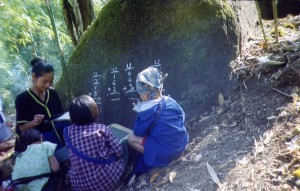How We Help
Natural Disaster Relief:
Cyclone Nargis, the deadliest natural disaster in the recorded history of Burma, made landfall in the country on May 2, 2008, causing catastrophic destruction and at least 80,000 fatalities with a further 56,000 people still missing. However, Labutta Township alone was reported to have 80,000 dead and some have estimated the death toll may be well over 100,000. Relief efforts were slowed for political reasons as Burma’s military rulers initially resisted aid. More than 20 days after Cyclone Nargis hit and while UN estimates suggest that less than 25% of those in desperate need have received any aid due to the restrictions imposed by the Burma’s xenophobic Generals. U.N. Stressed that an estimated 1.5 million people in the Irrawaddy River delta were still in dire need and had not received aid.
Recognizing the military regime’s policy of, at a minimum siphoning of funds and sup;ies if not outright theft of entire shipments of humanitarian aid, World Aid works strictly with local communities and local social groups to bring aid to the disaster areas. In this way we have been able to maximize effectiveness of resources made available to us.
This has effectively by passed the regimes efforts to prevent aid into these areas. Thus, the obvious need for care that these fragile networks are not compromised by over coverage of media which exposing the frequency and severity in the ethnic areas away from the eye of the media and human rights documentation.
World Aid focuses only on working with the local communities and local social groups to counter any and all efforts of the military regime to break the spirit of the people of Burma. World aid helps the people of Burma to help themselves.
Medical Assistance:
According to international experts, Burma has the lowest per person spending on healthcare in the world. Malaria, respiratory infections and diarrhea, and anemia are devastatingly common in Burma. It is also a regional incubator for HIV/AIDS, TB, measles and typhoid fever. Due to the civil war, there are many victims of landmines as well. World Aid sends medical supplies to villages and IDP camps in the conflict areas of Burma. We also help train local doctors, community health workers, and support mobile medical relief teams and clinics.
Educational Assistance:
World Aid supports teacher training and schools throughout Burma and along the Thai/Burma border. The Need for educational assistance continues and our desire is for all the villages to have a trained teacher and materials for primary and secondary education. This is one of the biggest sources of encouragement for the people of Burma in the midst of strife.

The picture depicts how little and education project takes to implement other than the unbendable spirit of the teacher and students. This was taken while a group of IDPs were on the run from the Burma Army.
Advocacy:
We seek to raise awareness about the humanitarian crisis in Burma by distributing educational videos and pamphlets, participating in local advocacy groups and sharing about the struggle for freedom and justice in Burma through one-on-one and group presentations.
World Aid also frequently interacts with offices of the US government to keep the awareness of the situation in Burma current.
Refugee Resettlement Support:
The manmade disaster in Burma has caused a continual flow of refugees into bordering countries such as Thailand. Of those that make it to refugee camps many are put into resettlement programs. Refugee resettlement agencies like the IRC, World Relief, Catholic Community Services, Jewish Family Services and the Lutheran Family Services assist in resettling refugees here in the US.
World Aid assists and carries on with these programs by providing language service, cultural transition, advocacy in medical, education, housing and welfare programs and recreating a safe community environment for these weary people of Burma.
